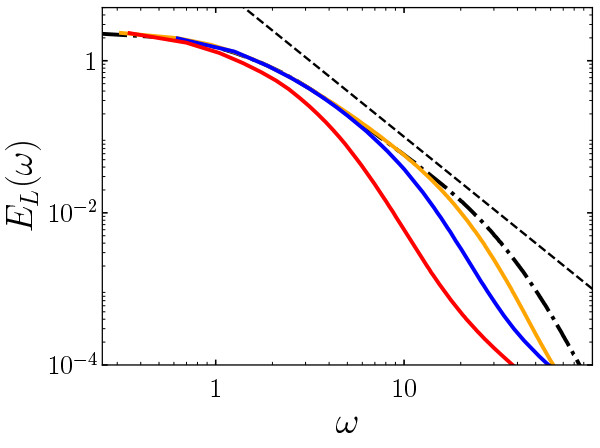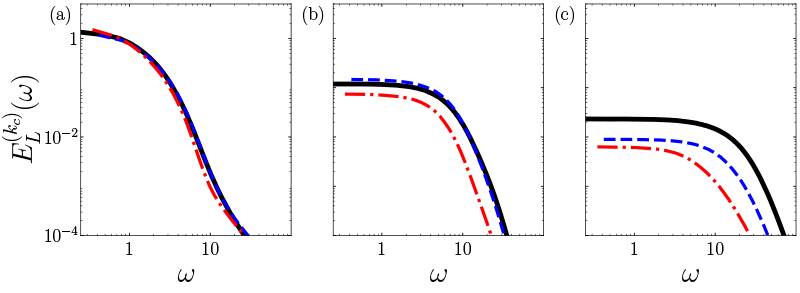Newsletter 2025.3 Index
Theme : "The Conference of Fluid Engineering Division" (Part 2)"
|
Lagrangian statistics in turbulent flows of viscoelastic fluids
 |
 |
Yusuke KOIDE |
Susumu GOTO Osaka University |
Abstract
We investigate the Lagrangian statistics of polymer turbulence by conducting direct numerical simulations of viscoelastic turbulent flows using the FENE-P model. Polymers modulate turbulent flows in a periodic cube depending on the polymer relaxation time. Visualization of the bandpass-filtered enstrophy illustrates that turbulent flows are suppressed sequentially from small-scale vortices as the polymer relaxation time increases. Correspondingly, the energy spectra are attenuated from the high-wave-number range. These effects of polymers on the spatial structures of turbulence are consistent with conventional wisdom. To reveal the Lagrangian aspect of turbulence modulation by polymers, we evaluate the power spectral density of the Lagrangian velocity for various relaxation times. We find that the Lagrangian spectra are attenuated sequentially from the high-frequency regime, while the low-frequency behavior almost coincides with that of Newtonian turbulence.
We adopt a scale-decomposition analysis for the Lagrangian velocity to understand the modulation mechanism of the Lagrangian spectra by polymers from the viewpoint of the hierarchy of coherent vortices. This scale-decomposition analysis enables us to quantify the contributions of different-scale flows to the Lagrangian spectra. Our analysis reveals that, as the polymer relaxation time increases, polymers attenuate the contribution of small-scale vortices to the Lagrangian spectra, whereas the contribution of large-scale vortices exhibits almost the same behavior as in Newtonian turbulence. Therefore, we conclude that the Lagrangian velocity spectra are suppressed from the high-frequency range in the same way as the Eulerian energy spectra are suppressed from the high-wave-number range; the essential underlying mechanism is the sequential suppression of coherent vortices from small scales by polymers.
Key words
Polymer, Turbulence, Lagrangian statistics, Direct numerical simulation, FENE-P model
Figures
Movie 1 Isosurfaces of the bandpass-filtered enstrophy with the cutoff wavenumber (red),
(yellow), and
(cyan) for (a)
, (b)
, and (c)
.

Figure 1 Energy spectrum of viscoelastic turbulent flows for
(orange),
(blue), and
(red). For comparison, the black dash-dotted line shows
of Newtonian fluids. The dashed and dotted lines show
and
, respectively.

Figure 2 Power spectral density of the Lagrangian velocity
. The colors are the same as in Figure 1. For comparison, the black dash-dotted line shows
of Newtonian fluids. The dashed line shows
.

Figure 3 Power spectral density of the bandpass-filtered Lagrangian velocity
for (a)
, (b)
, and (c)
. Different colors correspond to different
: black,
; blue,
; red,
.

